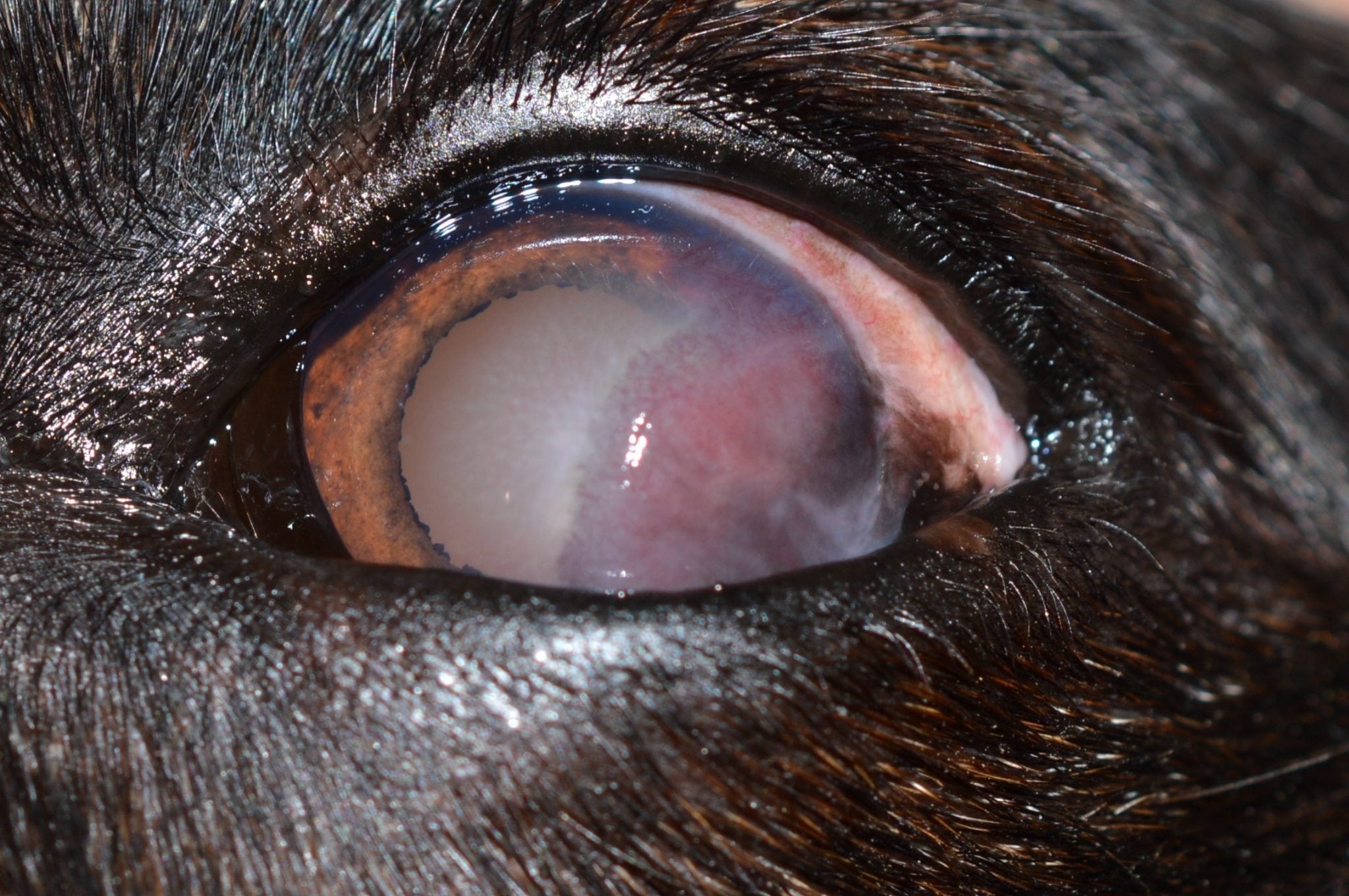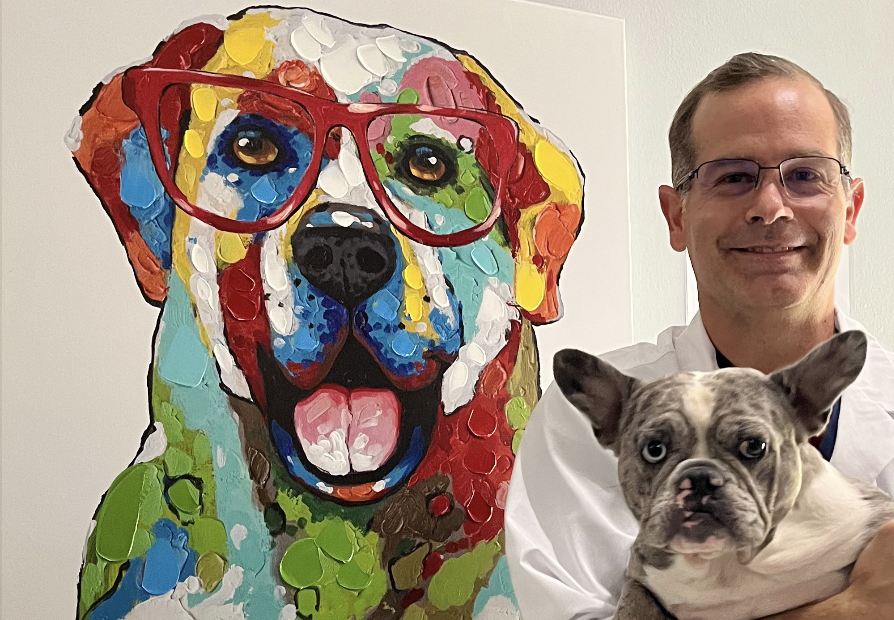Pet Pannus (Chronic Superficial Keratitis) in Katy, TX
At Animal Eye Medical & Surgical Specialists in Katy, TX, we specialize in diagnosing and treating pet pannus, a progressive eye condition that can affect vision. Our team is dedicated to providing personalized care to help manage this chronic condition and preserve your pet’s vision.
Understanding Pet Pannus (Chronic Superficial Keratitis)
Pannus, also known as chronic superficial keratitis, is an immune-mediated disease that affects the cornea, leading to progressive opacity. At Animal Eye Medical & Surgical Specialists in Katy, TX, we are committed to providing expert care for pets diagnosed with pannus, helping to manage this condition and preserve your pet’s vision.
Pannus manifests through several distinct symptoms that pet owners should be aware of:

The most common sign of pannus is a gradual clouding of the cornea, which can worsen over time if not treated.
A loss of pigment and the development of nodules on the edge of the third eyelid is also indicative of this condition.
Redness in the conjunctiva, the tissue lining the eyelids, often accompanies the disease.
In some cases, pannus can cause raised masses on the cornea that may resemble cancerous growths.
While pannus is not painful, its progression can lead to significant vision impairment, and if left untreated, it can result in blindness. If you notice any of these symptoms in your pet, contact us immediately for an evaluation. Early intervention is crucial to managing pannus and protecting your pet’s vision.

Causes of Pet Pannus (Chronic Superficial Keratitis) in Katy, TX
Pannus is primarily an immune-mediated disease, meaning the immune system mistakenly attacks the normal tissue of the cornea. Several factors contribute to the development and progression of this condition:
- Genetic Predisposition: While pannus can affect any breed, German Shepherds are particularly prone to this condition. Other breeds, including mixed breeds, may also be affected.
- Ultraviolet (UV) Radiation: Prolonged exposure to UV light, especially in dogs living at high altitudes (above 3,000 feet), has been linked to the onset and exacerbation of pannus.
Treatment Options for Pet Pannus in Katy, TX
Managing pannus requires a comprehensive and lifelong approach, primarily focused on controlling the immune response and maintaining clear vision.
Medical Management
- Immune-Modulating Medications: The cornerstone of pannus treatment involves the use of topical immune-modulating medications, usually administered in the form of eye drops. These medications help to reduce inflammation and slow the progression of corneal opacity.
- Aggressive Therapy: In many cases, aggressive medical treatment can significantly reverse the corneal changes associated with pannus, leading to improved vision for the affected pet.
Long-Term Maintenance
Pannus is a chronic condition that requires ongoing management even after the initial symptoms are controlled:
- Daily Medications: Continued use of daily topical medications is often necessary to prevent the recurrence of pannus. Regular monitoring and adjustments by your veterinarian ensure that the disease remains under control.
- Surgical Implants: For some pets, surgical implants that slowly release medication over time can be an effective long-term solution, reducing the need for frequent eye drop applications.
Why Choose Animal Eye Medical & Surgical Specialists in Katy, TX?
At Animal Eye Medical & Surgical Specialists, we understand the complexities of managing a chronic condition like pannus. Here’s why pet owners in Katy, TX, trust us with their pet’s eye care:
- Expertise in Ocular Diseases: Our team specializes in the diagnosis and treatment of various eye conditions, including pannus.
- Customized Treatment Plans: We provide individualized care plans that address the unique needs of each pet, ensuring the most effective management of their condition.
- Commitment to Lifelong Care: Recognizing the chronic nature of pannus, we offer ongoing support and monitoring to help maintain your pet’s vision and quality of life.
If your pet is showing signs of pannus, early intervention is crucial to preserving their vision and managing the condition effectively. Our team at Animal Eye Medical & Surgical Specialists in Katy, TX, is dedicated to providing comprehensive care and support throughout your pet’s treatment journey. Contact us today to schedule a consultation and start a customized treatment plan that will help protect your pet’s eye health and maintain their quality of life.

